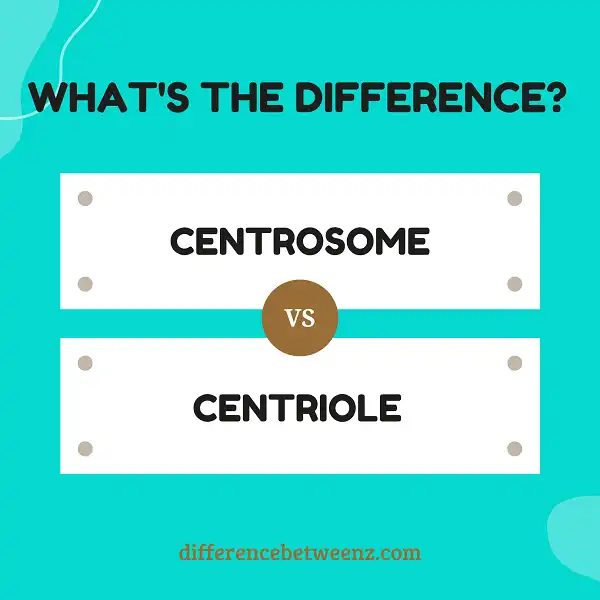Centrosomes and centrioles are both important components of a cell’s interior structure, but they have distinct roles. It is essential to understand the differences between these two structures in order to fully appreciate their importance. Centrosomes and centrioles play an integral role in establishing the building blocks of cells by dividing them as well as helping with cell movement.
They also coordinate activities during mitosis and meiosis which are cellular reproduction processes that prepare for genetic reshuffling or specialization respectively. Understanding what makes this duo different from each other can provide insight into the intricate inner workings of our complex bodies. In this blog post, we will explore what makes centrosomes and centrioles unique from one another, so you can gain an understanding of why these elements within cells are crucial for life!
What is Centrosome?
Centrosomes are structures found in most eukaryotic cells and are invaluable tools to the cell. Centrosomes provide a critical organizing role during cell division, acting as a hub from which microtubules emanate outwards. Centrosomes consist of two orthogonally arranged centrioles surrounded by an electron-dense matrix called the pericentriolar material.
The centrosome further controls the arrangement of several essential proteins for correct mitotic segregation of chromosomes, regulation of mRNA translation, and construction of flagella or cilia at an appropriate position on the cell surface. Importantly, Centrosomes perform many vital roles underlining its importance in the overall functioning of eukaryotic cells.
What is Centriole?
Centrioles are important organelles in eukaryotic cells, where they play essential roles in cell division. A centriole structure is a barrel-shaped cylinder composed of nine triplet microtubules arranged with crossover points that form a three-dimensional helical shape.
- Centrioles are generally located at right angles to each other and organize the mitotic spindles during cell division by acting as attachment sites for proteins.
- Centrioles also play an important role in the assembly of cilia and flagella, which are cellular appendages used primarily for motility, though they can also produce currents that move environment particles into the cells or eject substances from the cell’s surface.
- Centrioles involve in DNA segregation during the bacterial DNA replication process by acting as structures responsible for replication fork stabilization.
Centriole contributes to mitochondrial morphology, force generation, and intracellular signaling pathways involved in the mechanosensing functions of tissues like hearing or muscle power.
Difference between Centrosome and Centriole
Centrosomes and Centrioles are both structures which can be found in eukaryotic cells, but they are distinct components with distinctive roles.
- Centrosomes serve as a microtubule-organizing center associated with organizing the cell’s mitotic spindle during cell division. Centrioles, on the other hand, have a function related to the formation of cilia and flagella.
- Centrioles are short cylindrical cell organelles composed of nine sets of triplet microtubules arranged in a circlular pattern while Centrosomes and their accompanying appendages called Centrallys help to establish the spindle poles during cell division for most animal cells.
Ultimately, Centrosomes and Centrioles each fulfill important functions as part of an organism’s cell structure.
Conclusion
Though both organelles are concerned with the organization of microtubules during cell division, there is a basic difference between centrosome and centriole. The major difference between centrosomes and centrioles is that centrosomes are found in both animal and plant cells whereas centrioles are found only in animal cells.
Centrosomes function as the main microtubule-organizing center (MTOC) of a cell whereas centrioles help in the formation of cilia, flagella, or basal bodies. Animal cells have one functional pair of the central body while plant cells lack central bodies. This is also another significant difference between centrosome and centriole. Hence, this summarizes the key difference between these two important organelles involved in cell division.


